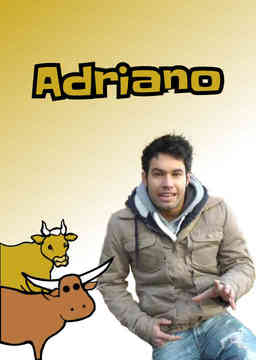









Difficulty:
 Adv-Intermediate
Adv-Intermediate
Italy Sicilian
The segment concentrates on the richness of the Sicilian dialect, a dialect which is less and less spoken. The narrator interviews two poets who recite their works in Sicilian, providing insights into the language.
Difficulty:
 Adv-Intermediate
Adv-Intermediate
Italy Sicilian
Giuseppe Pitrè received his degree in medicine in 1865. His patients, among Palermo's poorest, provided him with a wealth of ethnographic material.
Difficulty:
 Intermediate
Intermediate
Italy
The Abruzzo Region, sometimes known as the Abruzzi with an i in older publications, is the area of interest for this six-segment video. This segment concentrates on the Piccolomini Castle in Marsica.
Difficulty:
 Adv-Intermediate
Adv-Intermediate
Italy Sicilian
A woman performs a traditional Sicilian ritual involving the sticking of pins into an onion, accompanied by prayers, in order to bring back the boyfriend of her suppliant.
Difficulty:
 Intermediate
Intermediate
Italy
What does it mean to be a European? Is the variety of languages in Europe an obstacle to actual unification? Umberto Eco explores these questions and offers some interesting insight.
Difficulty:
 Adv-Intermediate
Adv-Intermediate
Italy Sicilian
Giuseppe Pitrè loved attending performances of chivalric folk plays in Palermo. This segment follows a marionette player at Palermo's Opera dei Pupi, the same theater where Pitrè went to see folk epics.
Difficulty:
 Intermediate
Intermediate
Italy
Highlights include a church straddling the Romanesque and Gothic in Celano, and Massa d'Albe (the Roman city of Alba Fucens), where there is an amphitheater excavated from rock. The word arena comes from the Latin word harena, or sand. Sand was used on arena floors to catch the blood lost during gladiator games and the like.
Difficulty:
 Adv-Intermediate
Adv-Intermediate
Italy Sicilian
Palermo faces the sea and has a very long history of immigration. The narrator interviews a young woman whose great grandfather came to Sicily from Sudan. She is involved in educating immigrants from Africa and Asia. Pitrè was also highly involved in education.
Difficulty:
 Intermediate
Intermediate
Italy
The French government is privileged to have two of Rome's most beautiful properties: Palazzo Farnese, which they rent for a nominal fee and use as their embassy, and Villa Medici, which is the home of the French Academy, and was procured by Napoleon. The narrator speaks of how the land on which Villa Medici was built was highly appreciated by the ancient Romans.
Difficulty:
 Intermediate
Intermediate
Italy
The segment highlights two medieval churches near the ancient site of Alba Fucens. Both churches display ornamental facings made from pieces of colored marble that are intricately pieced together, what is known as Cosmatesque work.
Difficulty:
 Adv-Intermediate
Adv-Intermediate
Italy Sicilian
A Palermo doctor is interviewed about his practice and the African and Southeast Asian immigrant patients that he treats.
Difficulty:
 Intermediate
Intermediate
Italy
The segment focuses on the reasons behind the founding of the French Academy by Louis XIV
Difficulty:
 Intermediate
Intermediate
Italy
Abruzzo churches built by order of Saint Francis of Assisi (1226–1330) or dedicated to him, are featured in this segment.
Difficulty:
 Adv-Intermediate
Adv-Intermediate
Italy
A Palermo doctor discusses the Integration of immigrants in Sicily and highlights the successes in healthcare. Medical assistance is provided for all immigrants, whether lawful or not.
Difficulty:
 Intermediate
Intermediate
Italy
A tour of Villa Medici's reception and private rooms. Ferdinando de' Medici hired the architect and sculptor Bartolomeo Ammannati to expand the villa, as well as other renowned Florentines artists to create fresco cycles exalting his life. We catch a glimpse of his frescoed south-facing apartment, which would have been used in the colder months, while the north-side suite was for warmer periods.
Are you sure you want to delete this comment? You will not be able to recover it.